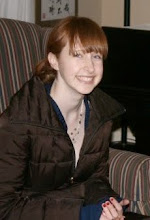Intended for the readers of Review Magazine, or another regional publication
The director’s introductions are to a dance performance as the chips and salsa are to a meal at a Mexican restaurant: the quality of the appetizer betrays the quality of the substance to follow. Founder Cori Terry and Coordinator Erin Mitchell opened Saturday night’s offerings at the Midwest’s Regional Alternative Dance (RAD) Festival, hosted by Kalamazoo’s Wellspring Theatre, with routine declarations of excitement and acknowledgements of the audience and the crew. But for a one-time-only engagement with modern companies from around the country billed as “innovative” and “exuberant,” Terry and Mitchell’s introductions were not spicy, not subtle, and not hearty.
On the whole, the night’s five pieces, of 19 dances performed at RAD last weekend, followed suit. They could be at times well-phrased, virtuous, and even pretty, but rarely managed to be convincing or heartfelt. In the first piece, Erin Mitchell’s “Among the Porcelain,” the two women wore short black sequined dresses that readily showed matching bright red underwear. In combination with the offensively loud, squeaky music, the underwear could have been to push the audience to confront discomfort in the face of broken social norms except that the fluid choreography and quality of movement in no way suggested that. The turns were well executed and the formations were varied but not new, giving the impression that the dancers were introspective explorers.
Modern dance rests on the pillar of individuality, and attention to one’s own body is crucial for the dancer. But “feeling the movement” is no good to anyone other than the dancer unless he or she can communicate those feelings to the audience. The performing modern dancer must radiate the internal experience out, and transform exercise and meditation to valuable and sharable art. Only Matthew Janczewski’s “UGLY” achieved this level of performance, with his makeshift shoulder pads mirroring the choreography that was at times combative and tender. Janczewski and Galen Treuer’s faces changed as they moved around, with and against each other, an element that the other dancers missed.
RAD’s details elsewhere lacked cohesion too, and called into question the dance’s purposes. Gretchen Garnett’s “Just Passing Through” was a solo that explored a mix of full body movement and isolated extremities that ended, like a few other movements throughout the night, with Leah Katz simply ceasing movement and walking off-stage in faux contemplation. There is not a more trite way to end a modern piece and ruin the Festival’s claim to “impassioned… innovation.” Rachel Miller’s “Somewhere Else Not So Blighted” began with promising and relatable energy, as the spotlighted Miller and Jennifer Hudson moved wildly like wind sockets, which it gradually lost as the choreography slowed and the dancers forgot to treasure the music.
Kalamazoo dressed up for the event, it seemed, to impress each other more than anything else. The festival was limited in this way too; the small space and high ticket price ($10 for less than 45 minutes of dance) included only those who were predisposed to like the show. RAD’s “innovations” thus remained internal, not only within the dancers themselves but also within the city’s performance circle.
Subscribe to:
Post Comments (Atom)

This is a strong, well-organized review. I cannot imagine that dance is a particularly easy topic to write about, but you describe it with expressive and engaging vocabulary. The image of "the performing modern dancer" who "must radiate the internal experience out, and transform exercise and meditation to valuable and sharable art" is really powerful.
ReplyDeleteYou do a good job of touching on several of the dances which gives the reader a good sampling of the performance. And the thoughts and opinions which you weave into this overview really help to support your argument.